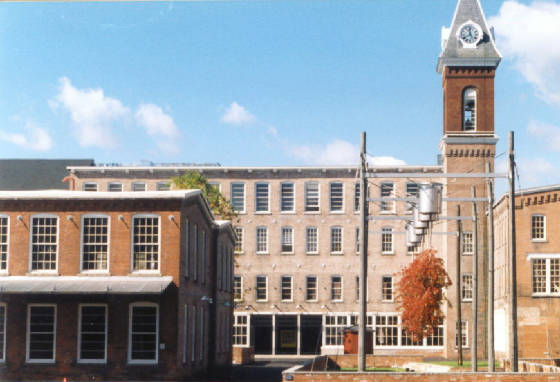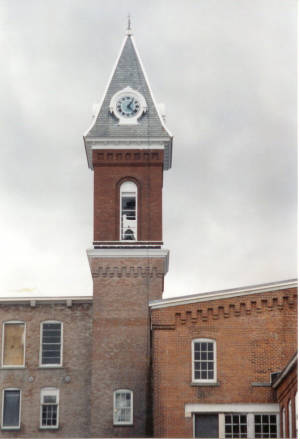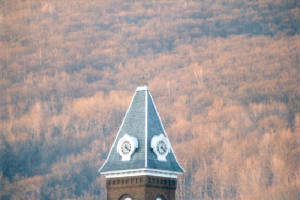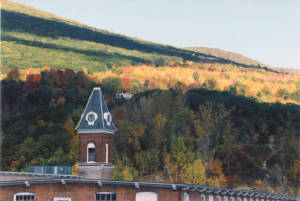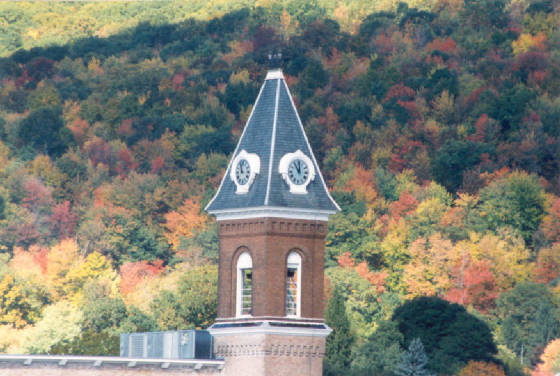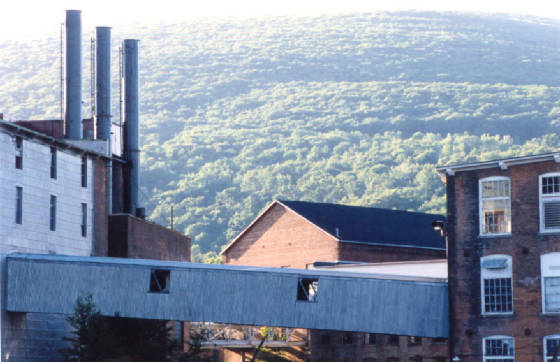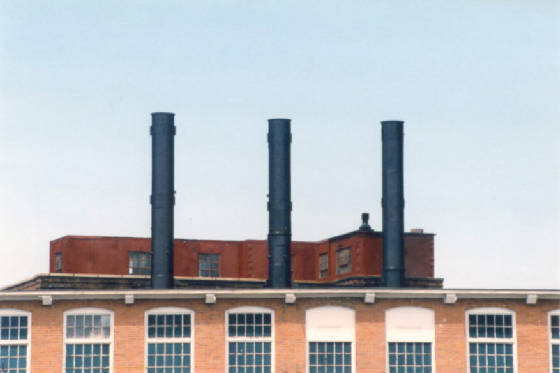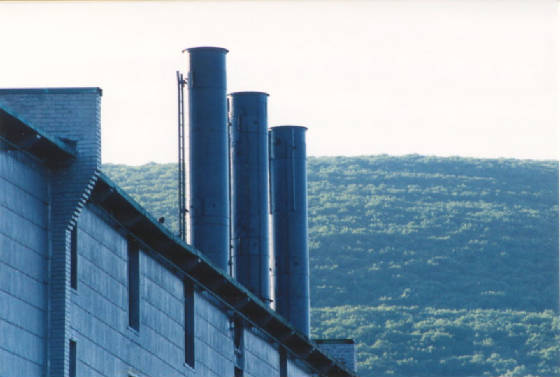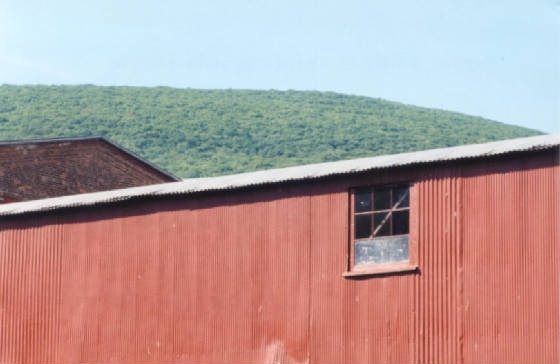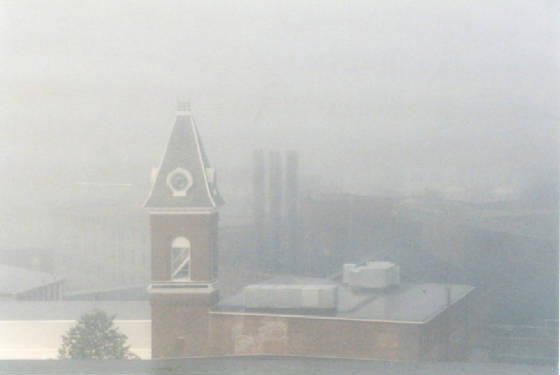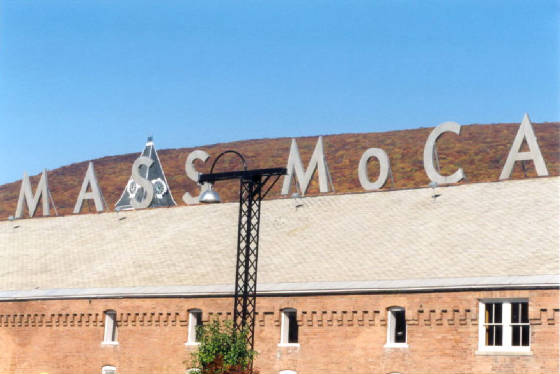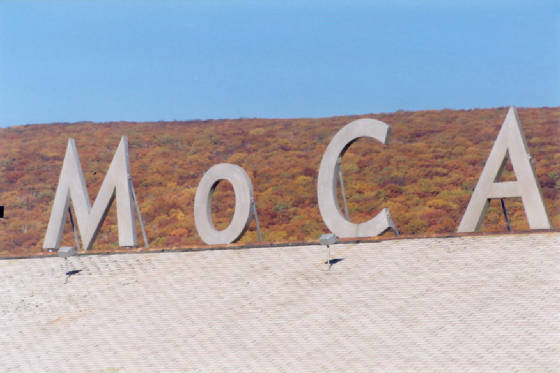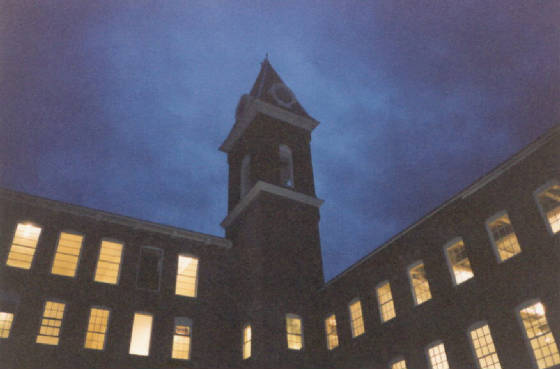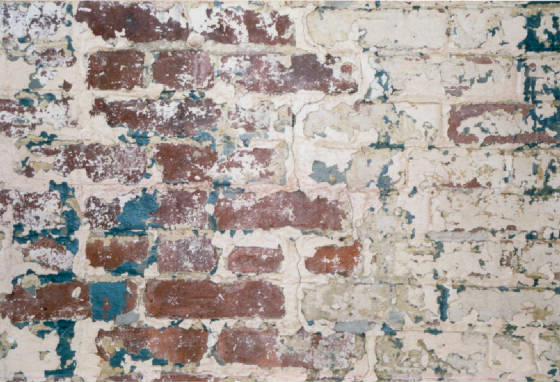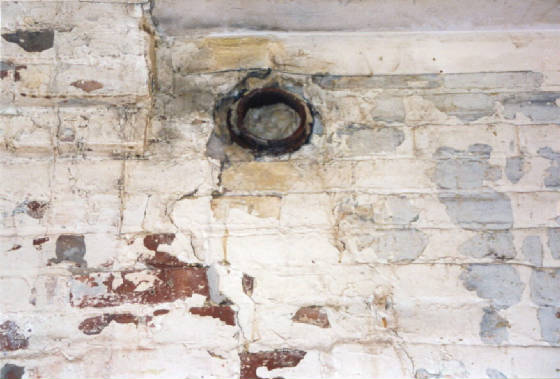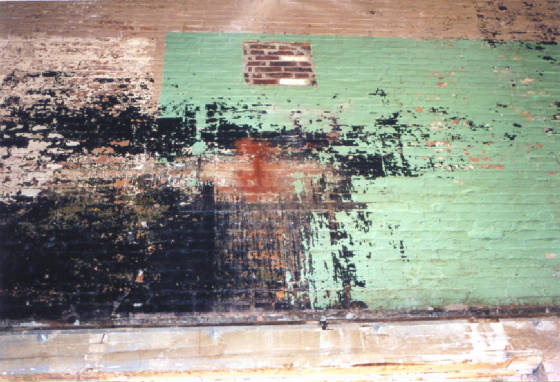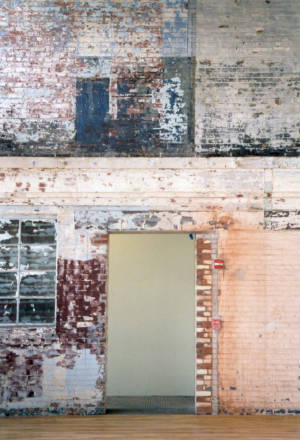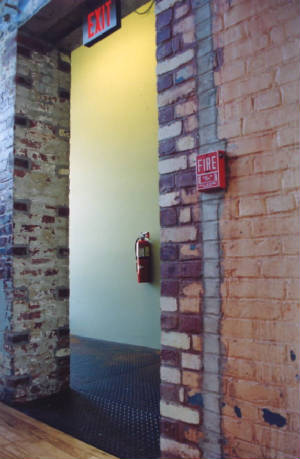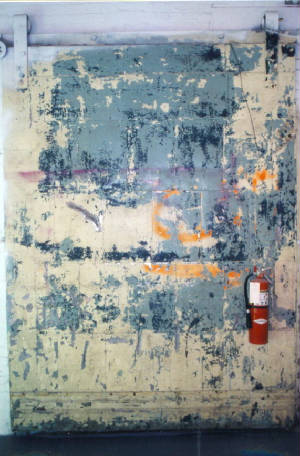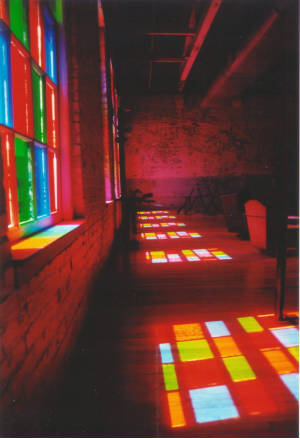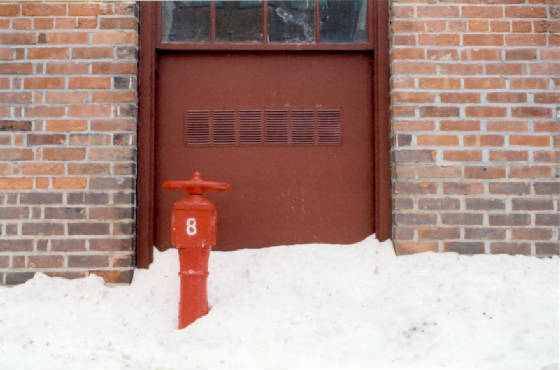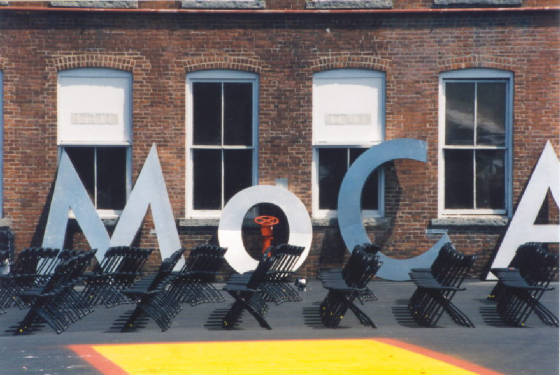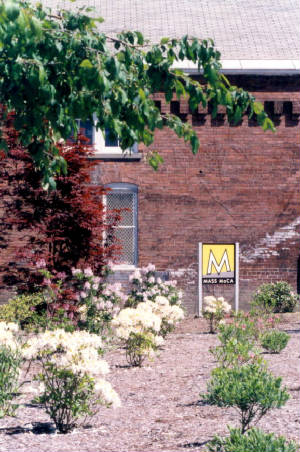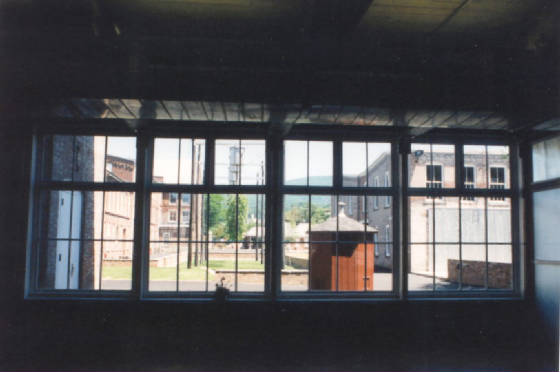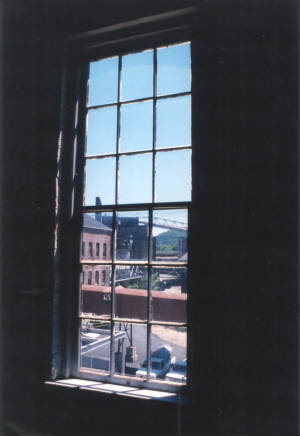The Massachusetts Museum of Contemporary Art opened in 1999. It occupies a 13-acre campus of 26 buildings formerly occupied by Arnold Print Works (1860-1942), and Sprague Electric Company (1942-1986). Its performing arts programs are equal in stature to its visual art programs. Mass MoCA averages over 100,000 visitors a year. One of the things that makes the museum special is that most of the buildings, inside and out, have been left as is, so visitors who wander its caverous spaces see large wood posts and beams, industrial-sized heating and plumbing equipment, and astonishingly beautiful multi-colored metal doors and brick walls that one staff member calls “anonymous art.”
As you can see, I have a great fondness for elevated walkways and smokestacks. They were entirely functional objects in old factories, but they now appear almost ornamental. The mountains in North Adams provide a soft, radiant backdrop for these scenes.
One very foggy morning, about 7:30, I grabbed my camera and scampered up the steep path to the top of the sand bank off River Street and shot the two pictures from that location. I took the last picture on the spur of the moment after leaving an evening performance at the Mass MoCA theater. It’s exactly what the camera decided to portray. No tricks needed.
When Sprague Electric Company vacated their factory in 1986, they left a strange and wonderful asset to the museum that was to become Mass MoCA: bricks walls covered with layers of paint, unexplained blemishes and holes, and other beautiful but unintended adornments. I shot most of these photos of the brick walls in the gallery in Building Four just before the first exhibition was installed in the spring of 1999.
The door (second photo down on left) is huge. There’s a story that, during the renovations, one of the staff discovered it, and after a brief conversation with the director, decided to keep it just as it was. Good choice! The colored windows in the third floor gallery gave my camera all sorts of problems, but I like how the picture came out.
I am especially fond of the window in Building Four (bottom right photo), with the many shades of paint on it. The window doesn’t face outside, it faces into a small alcove leading to an exit.
